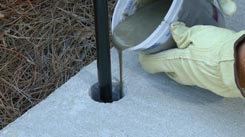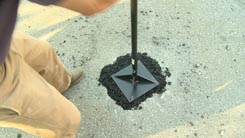Consumer: Volume 6, Issue 2
|
|
||||||||||||||||||||||||||
Need more know-how? Check out the QUIKRETE Guide to Concrete. Featuring step-by-step descriptions, full-color, photography, quantity calculators and helpful hints and insights for dozens of concrete, masonry and stucco projects.





 Concrete is so durable and dependable it's easy to take it for granted. But like any other surface around a house, concrete needs maintenance -- and sometimes repair.
Concrete is so durable and dependable it's easy to take it for granted. But like any other surface around a house, concrete needs maintenance -- and sometimes repair. I want to use
I want to use 